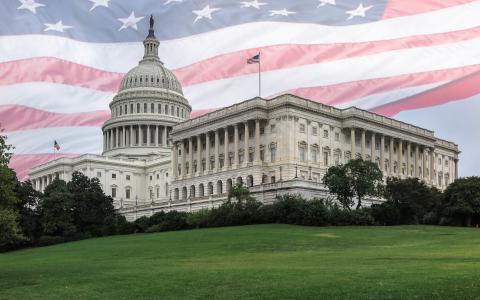
Jeffrey Gundlach, founder of DoubleLine Capital, urges America to rein in its borrowing spree before it triggers a financial catastrophe.
He warns that the national debt could soon surpass the government's ability to manage it, potentially straining the trust of international creditors. Gundlach’s cautionary note aligns with growing concerns among financial experts like Ray Dalio about an impending debt crisis fueled by the federal deficit, which recently expanded to $1.83 trillion, or 6% of GDP.
Gundlach outlines a dire trajectory for the US debt burden, pointing out that publicly held debt is forecast to surge from 97.3% of GDP in 2023 to 122.4% by 2034. He traces the roots of this fiscal predicament back to the 1980s, when large budget deficits became normalized. Back then, low interest rates made borrowing manageable. However, the sharp rise in rates to combat post-pandemic inflation now forces the government to allocate a larger portion of its budget to servicing debt.
This scenario creates a troubling cycle. "Higher interest expenses lead to deeper deficits, which necessitate more borrowing, further increasing debt loads," Gundlach explains. "Unless the Federal Reserve lowers rates—risking higher inflation—the country may soon find itself out of options to delay the reckoning."
For wealth advisors and RIAs, this evolving debt crisis poses serious implications. Gundlach’s predictions suggest that rising interest rates and increasing debt loads could erode economic stability, heightening market volatility. The ripple effects could also influence asset allocation strategies, risk assessments, and long-term portfolio planning.
The potential for a recession exacerbates these risks. During economic downturns, government tax revenue typically shrinks, limiting its ability to service debt. Gundlach foresees this scenario triggering a wave of money-printing, which would drive bond yields higher, further straining government finances. He has long maintained that the US economy is already in a recession, citing indicators like rising layoffs.
By 2034, Gundlach projects that debt servicing costs will consume a staggering proportion of tax revenue. At a 6% interest rate, 45% of revenue would go toward debt payments. If rates climb to 9%, that figure would balloon to 83%, leaving little room for other fiscal priorities. Under such conditions, the federal budget deficit could expand to 11% or even 18% of GDP, creating further economic instability.
For RIAs, the prospect of soaring debt servicing costs underscores the need for a diversified approach to portfolio management. Fixed-income investments, in particular, may face pressure as bond yields rise. Advisors might consider focusing on assets that can hedge against inflation or provide stable returns in uncertain markets.
Gundlach emphasizes that time is running out for Washington to address the looming crisis. While the current administration has some tools at its disposal, decisive action is required. A recent report from Pimco outlined three potential strategies: reducing government inefficiencies, scaling back ambitious tax cuts, and implementing fiscal reforms to stabilize the deficit.
These measures could slow the trajectory of debt growth, but they require political will and bipartisan cooperation—both of which have been in short supply in recent years. Advisors should monitor these developments closely, as they will likely shape the broader economic landscape and influence investment opportunities.
For RIAs navigating this challenging environment, understanding the implications of government borrowing is crucial. Rising deficits and debt burdens could lead to tighter monetary policies, reduced public investment, and potential economic stagnation. Gundlach's warning serves as a stark reminder of the interconnectedness of fiscal policy and market dynamics.
As the debt spiral unfolds, advisors may need to revisit their assumptions about economic growth, interest rates, and inflation. Gundlach’s insights suggest that the US is heading toward a period of heightened uncertainty, where traditional investment strategies might not suffice. Proactive planning, informed by macroeconomic trends, will be key to helping clients safeguard their wealth and achieve their financial goals in the years ahead.



